How to Insert Fractions in Microsoft Excel
Adding fractions in Excel ensures accurate and efficient calculations, making it a valuable tool. Excel’s formatting options and ability to handle complex calculations make it essential for working with fractions.
This tutorial explores different methods for inserting fractions in Microsoft Excel. It covers using fraction format, by changing cell format, and Unicode characters to effectively represent fractions within Excel. Let’s suppose we have a construction project data sheet where it is necessary to indicate the lengths of rooms in feet using fractions for accuracy. By utilizing fractions in this datasheet, we ensure precise measurements and maintain accuracy in documenting the room dimensions for the project.
Method 1: Inserting Fractions in Microsoft Excel Utilizing Fraction Format.
The fraction format in Excel allows for the representation of fractions in a structured and visually appealing manner. Therefore, let’s explore how to use this format to insert fractions in our data.
Step 1 – Choose the Cells and Right Click
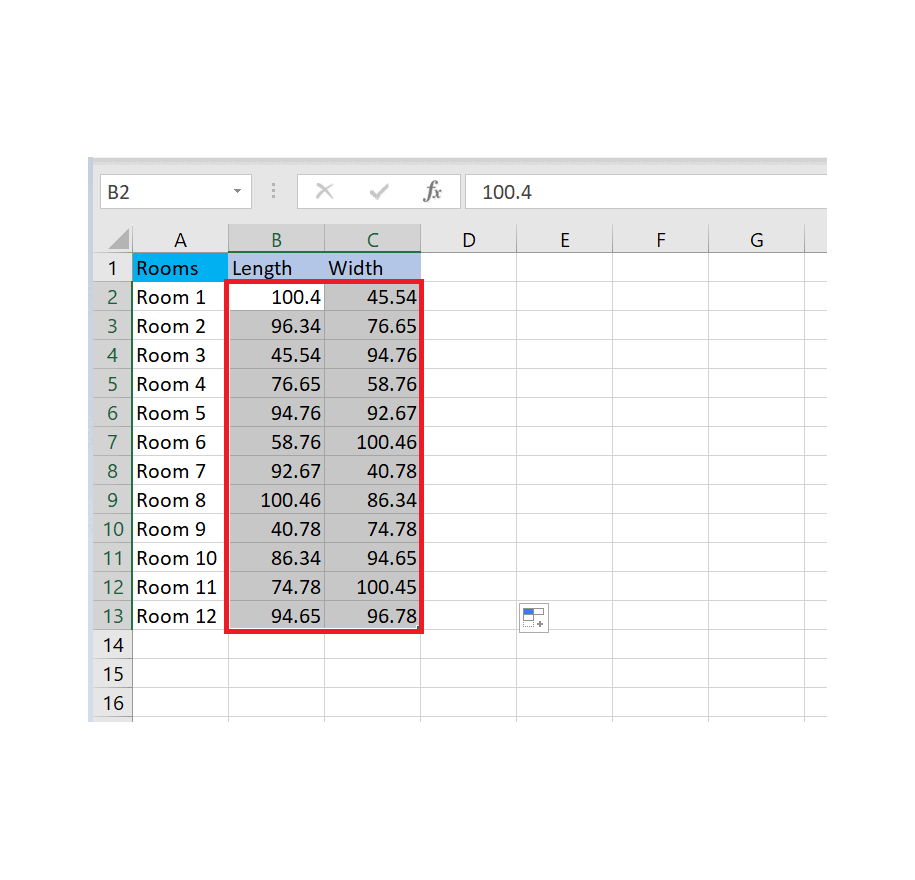
- Choose the cells that you wish to format as fractions in Microsoft Excel and then click the right button of the mouse.
Step 2 – Select “Format Cells” From the Context Menu
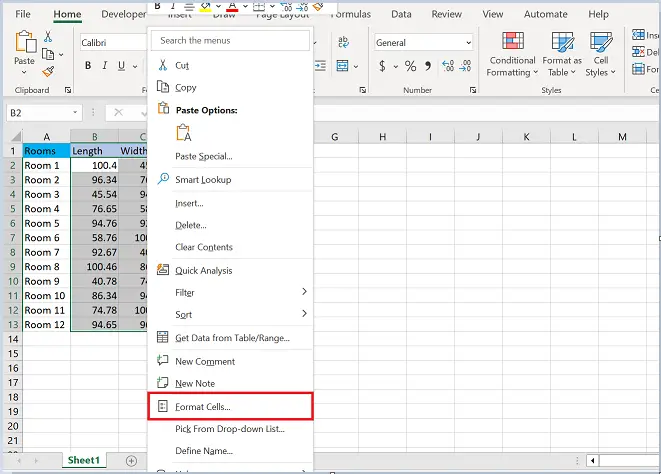
- Perform click on the “Format Cells” option in the context menu.
Step 3 – Locate the Fraction Format
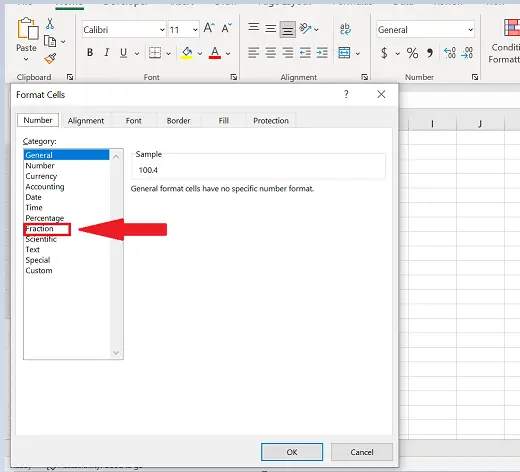
- Select the fraction Format in the category group.
Step 4 – Select the format of Fraction
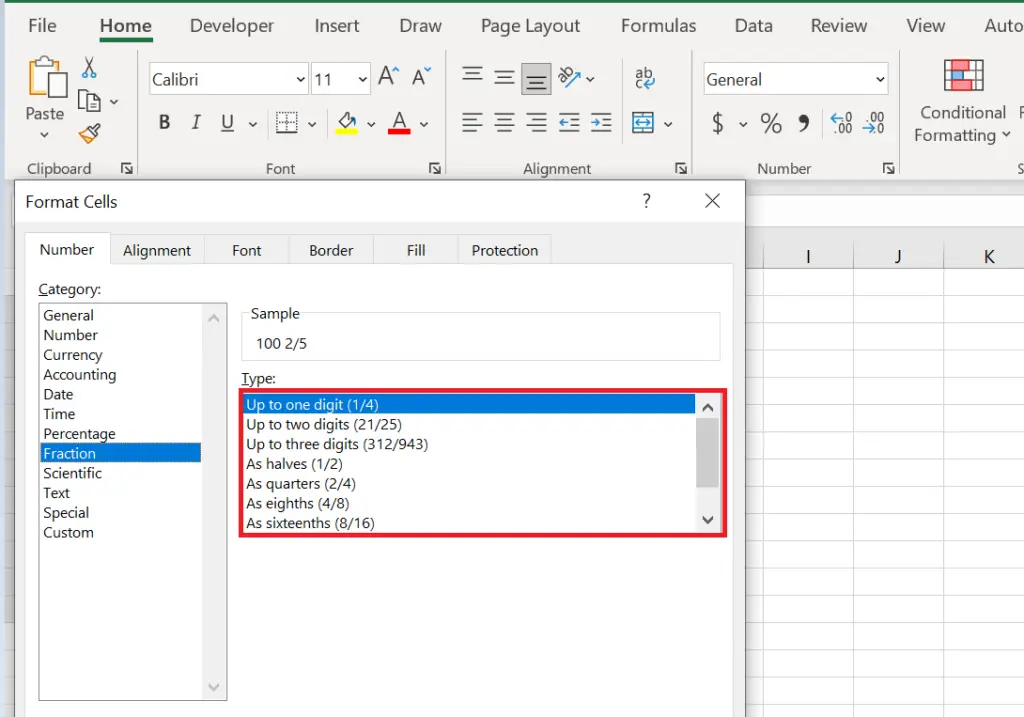
- Select the type of fraction which you want to implement.
Step 5 – Hit “Ok”
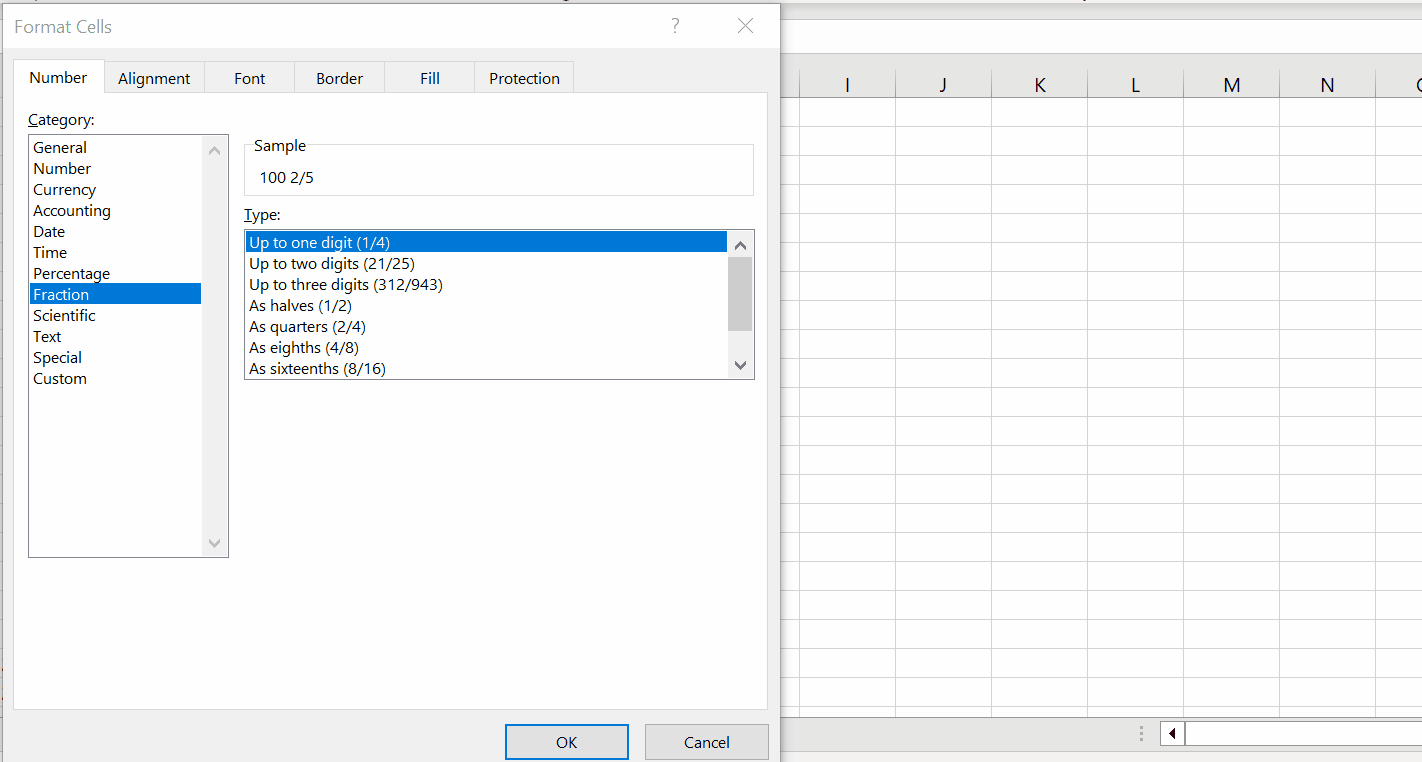
- Press ok to implement the fraction format. This will convert the decimal numbers to equivalent fractions.
Method 2: By Changing the Cell Format
Cell formatting in Excel customizes the appearance and behavior of cells. It includes options like fractions, font, borders, alignment, and number formatting, enhancing data presentation and analysis.
Step 1 – Select the Cells
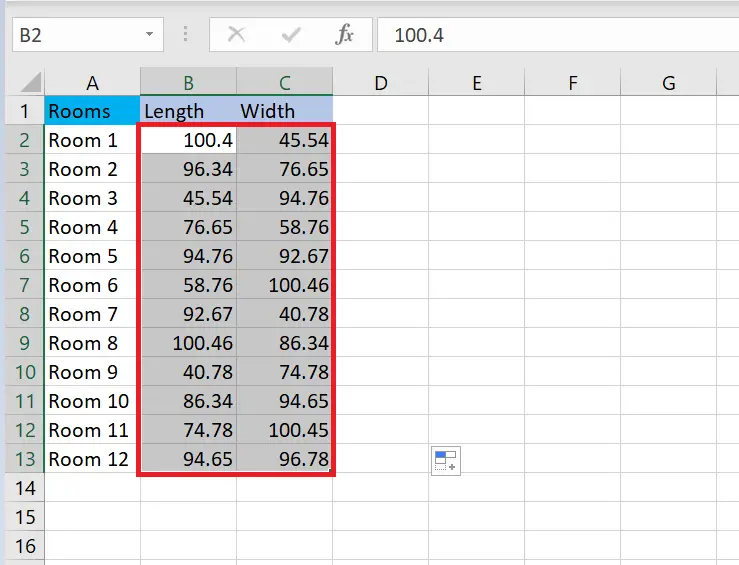
- Choose the cells that you wish to format as fractions in Excel.
Step 2 – Locate Home Tab.
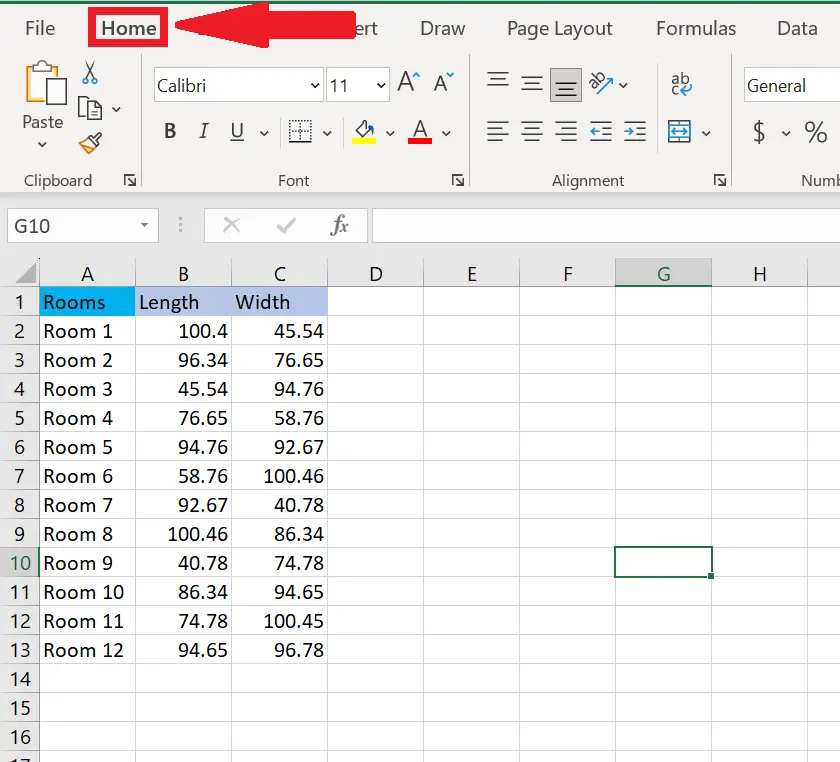
- Select the home tab in the ribbon.
Step 3 – Click on the dropdown menu in the Number Group
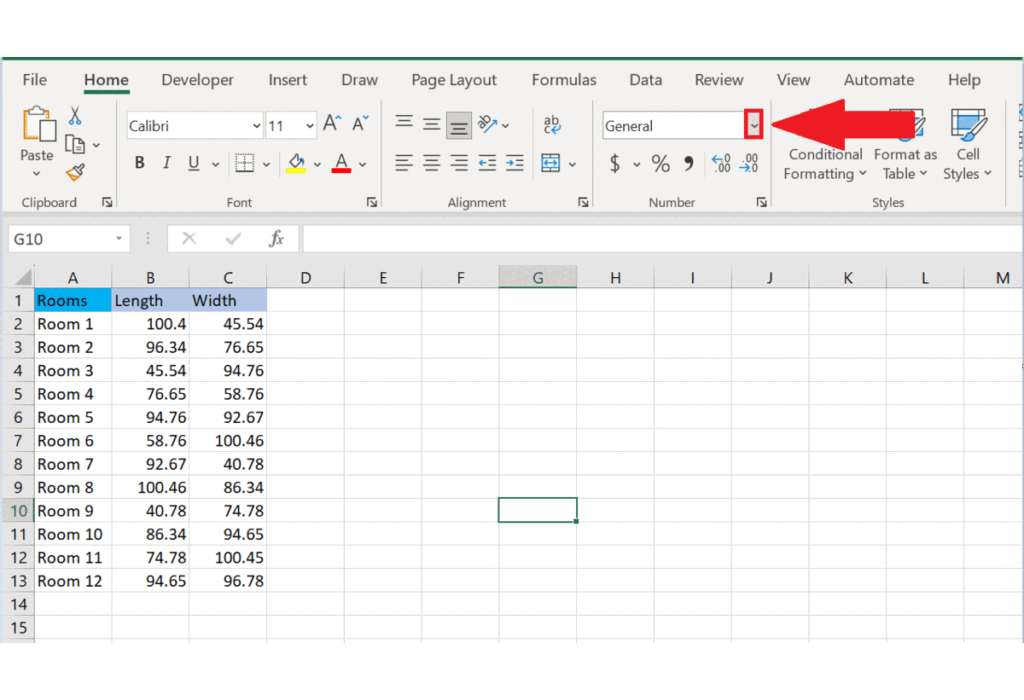
- Perform click on the scroll-down button in the number group on the Home tab to see further options.
Step 4 – Select the Fraction in the Scroll Down Menu
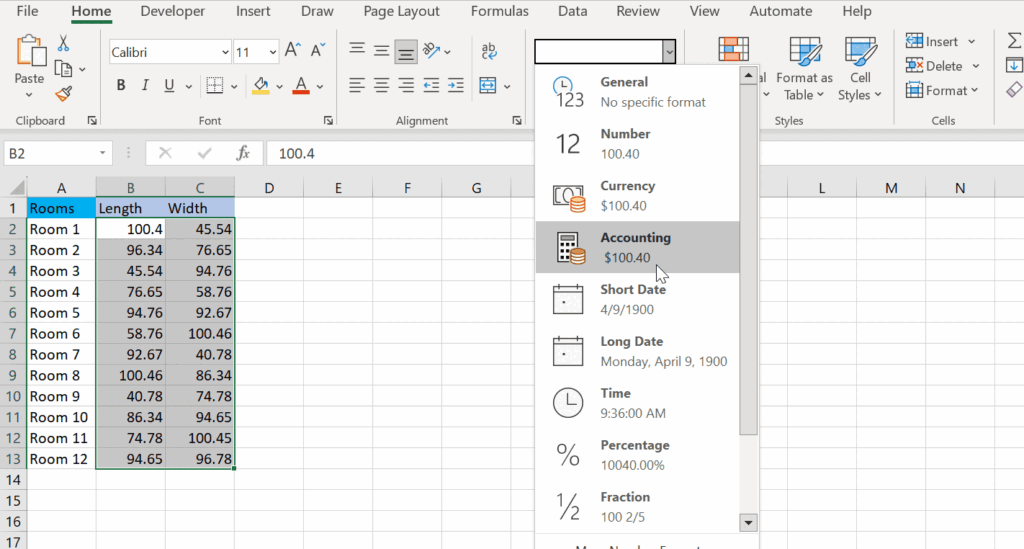
- Click on the fractions option in the scroll-down button.
Method 3 – Utilizing TEXT Function
The TEXT function in Excel is a powerful tool that allows you to format values in various ways, including converting decimals to fractions. While the TEXT function is versatile and can be used for a wide range of formatting purposes, it does not have built-in functionality specifically designed to convert decimals to fractions.
Step 1 – Select the Cell
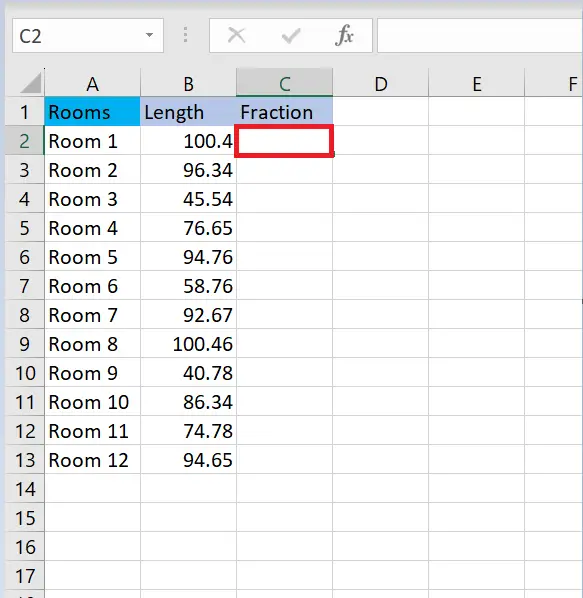
- Select the cell where you want to insert the fractions.
Step 2 – Enter the TEXT Function in the Formula Bar
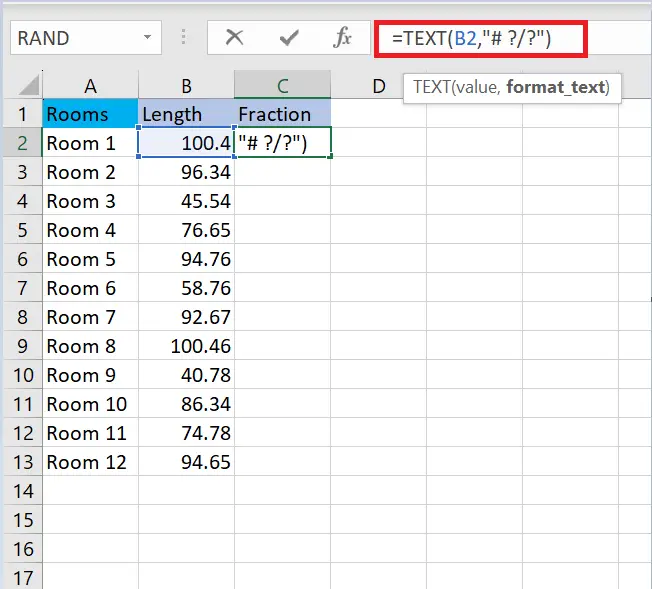
- Enter the TEXT function in the formula bar.
=TEXT(C4,”# ?/?”)
Where;
C4: This refers to the cell containing the number that you want to format as a fraction.
“# ?/?”: This is the formatting code used in the TEXT function.
“#” represents the placeholder for the whole number part of the fraction. If the number has a whole number part, it will be displayed. If not, it will be omitted.
“?” represents the placeholder for the numerator of the fraction.
“/” represents the fraction bar.
“?” represents the placeholder for the denominator of the fraction.
Step 3 – Applying Text Formulas with Autofill
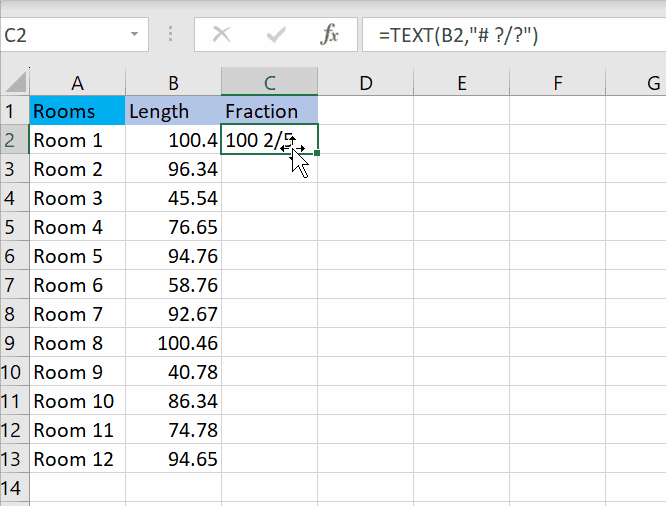
- Implement the formula in other cells using autofill and get the desired results.



